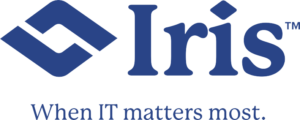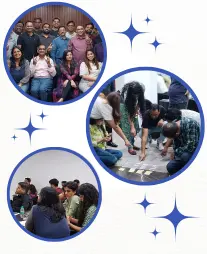Welcome To Universal Agile
Poorav Consulting International 478, Sector E-2, Vasant Kunj,New Delhi - 110070

500+
TRAININGS

15k+
PEOPLE TRAINED

150+
CORPORATE CLIENTS

100%
SUCCESS RATIO

500+
TRAININGS

15k+
PEOPLE TRAINED

150+
CORPORATE CLIENTS

100%
SUCCESS RATIO
Our Courses
CSM®
Certified ScrumMaster®
- Embrace Agile Thinking.
- Master Scrum Responsibilities.
- Stay Marketable in the Industry.
- Earn More with Certification.
- Advance Your Career.
- Join the Scrum Experts Community.
- Expand Your Network with Scrum Alliance.
CSPO®
Certified Scrum Product Owner®
- Master the Product Owner Role.
- Apply Essential Scrum Skills.
- Boost Your Product Owner Skills.
- Increase Earning Potential with Certification.
- Unlock Diverse Career Paths.
- Learn Industry Techniques for Product Success.
- Stand Out as a Certified Product Owner.
A-CSM ®
Advanced Certified ScrumMaster®
- Interactive workshop on facilitating Agile teams.
- Enhance participants’ coaching abilities.
- Assessment and strategies to enhance team dynamics.
- Unlock Career Opportunities in All Sectors.
- Increase Earning Potential with Certification.
- Learn to develop an Agile transformation roadmap for their organizations.



Meet Your Trainer
GAURAV RASTOGI
Certified Scrum Trainer & CEO Universal Agile
Gaurav Rastogi is a notable figure with substantial impact in the fields of Agile, Scrum, and entrepreneurship. He is Certified Scrum Trainer, Enterprise Agile Coach, and Entrepreneur, brings over 20 years of experience in the field. He has successfully led agile transformation for a number of organization and imparted agile training to 1000s of participants across the globe. Gaurav’s entrepreneurial spirit led him to found Universal Agile, a platform dedicated to promoting agile practices.Gaurav’s expertise lies in guiding large enterprise teams towards adopting an Agile mindset, fostering innovative cultures, and empowering individuals. Additionally, Gaurav actively engages in Agile Coaching, Speaking, and Community Volunteering, and frequently shares his insights as a speaker at global and regional Agile & Scrum conferences.
Upcoming Training
Combo Packages
Corporate trainings delivered to








Accelerate Your Company's Growth with Agile and Scrum Corporate Training
Unlock the true potential of your organization with our Agile and Scrum Corporate Training. Empower your team with the tools and insights necessary to navigate the dynamic landscape of today’s business world. Don’t just adapt to change, anticipate and lead it! Start your Agile transformation journey with us today and stay ahead of the curve.
Resources
In Agile software development, the “Definition of Done” (DoD) is a shared understanding of what constitutes a completed and acceptable piece of work. It provides a clear and concise definition of the minimum level of quality that is expected for any given product backlog item or user story. The DoD helps to ensure that all team members have a common understanding of what is expected to be delivered and what constitutes a potentially shippable product increment.
Lead by Industry Leading Trainers
Customer Feedback on Universal Agile
Trust Pilot Reviews
2024-01-07
My gratitude for the exceptional training sessions you provided. The trainer Mr. Gaurav Rastogi’s expertise and dedication made the entire learning experience both enlightening and enjoyable. His comprehensive knowledge and clear communication style made complex concepts remarkably accessible. His patience and willingness to address our queries with such enthusiasm truly created a supportive learning environment I feel equipped and confident to apply the newfound knowledge and techniques in my work, thanks to your guidance
2024-01-07
I recently completed the Scrum Master certification training, and I must express my sincere appreciation for the exceptional experience provided by Mr Gaurav Rastogi. The use of metaphors and real-life examples made the concepts tangible and easy to grasp. The activities, videos, and booklet not only connected the concepts with practical scenarios but also facilitated a dynamic and engaging learning environment.
2024-01-05
Best Training Ever:
The training was very interactive as we used welders approach to learn which is experiment and learn. Gaurav has excellent knowledge and teaching skills. He kept the entire group engaged all the time and it felt like on job training.
2024-02-10
The course facilitated by the instructor is well structured and easy to follow through. Instructors knowledge shared on the subject is well executed and it was a fun learning experience. I like that there is no biasness when it comes to sharing examples and questions on topic shared were presented in a way that made participants think and it is addressed accordingly too to clarify questions from participants as well.
2023-12-24
Gaurav Rastogi is simply an amazing trainer. He will never make you stressed with any slide. He ensures its a cake walk and we achieve our certification
2023-12-24
I highly recommend this Scrum Master class to anyone interested in learning the methodology or deepening their understanding. The instructor, Gaurav was engaging and knowledgeable, the materials were clear and concise, and the interactive exercises helped solidify the concepts.
2023-12-30
Gaurav was great in steering the path from training to get certified.
2023-08-19
Wonderful trainer!! Very interactive, experienced, knowledgeable. Very nice communication and a confidence booster. I have achieved more then my expectation.
2023-08-12
The training content and the style of presenting the content was apt. Trainer was super qualified and experienced. He made the training fun and easy to understand and stick.
2023-07-23
It was very interactive and I learnt through real life example. Thanks Gourav for the mind-blowing training. It was my first online training and I learn with Fun.
Why Universal Agile

- Gain a understanding of the foundational Agile and Scrum concepts
- Practice Quiz on Scrum & Agile.
- Trained more than 7000 Students on various professional certifications like CSM, CSPO, A-CSM and SAFe.
- Provide e-Learning Material based on Certification Content Outline.
- Pre-Recorded Workshops for Exam Preparation.

- Complimentary access to Universal Agile Academy for knowledge enhancement through various e-learning courses
- Monthly Live Online doubt clarification session with Industry Experts
- 100% Success Ratio
- Comprehensive post-training support, including access to additional resources, online forums, and networking opportunities.

Disclaimer : The information presented on this website and/or platform is intended for educational and informational purposes only. Users of this website and/or platform should not consider any information provided as legal, investment, tax, financial, or any other advice. Users are solely responsible for evaluating the merits and risks associated with the information presented on this website and/or platform. By using this website and/or platform, Users agree not to hold Universal Agile and its affiliates liable for any losses or damages that may arise from any decision made based on the information provided in the course or available on the website and/or platform.
Universal Agile reserves the right to cancel or reschedule events due to insufficient registrations or unforeseen circumstances that may prevent presenters from attending. It is strongly recommended that Users consult a Universal Agile agent prior to making any travel arrangements for a workshop.
By using this website and/or platform, Users agree to indemnify and hold Universal Agile and its affiliates harmless from any and all claims, damages, expenses, or losses arising from their use of the website and/or platform or from their violation of these terms and conditions.

